Difficulty: Medium-Hard
Total Time: 6 Hours non decorated (40-50 hours decorated)
According to one of the theories about the head-gear from Birka, hats display military rank. The pointed hats with gold ornaments may represent the highest rank, the rounded with silver ornaments a middle rank, and the rounded without any ornaments the lowest in rank.
The Birka grave 958 also shows what is probably a rounded or dome shape hat as shown in the picture from Arbmans "Birka - die Gräber", page 383.
Step One: Make a pattern from the basic shape to suit your desired size.
Measuring the head where the hat will sit (round up to the nearest inch). Divide this number by six - this is the width of your pattern. Next measure the length fron one side of the hat to the other (ear to ear over the top of your head) and divide this number by two - this is the height of your pattern. Draw a line to connect these two points Allow 1cm all the way around and cut out your new pattern.
Step Two: Cut six pieces of wool and sew together.
You can test your hat pattern first at this stage using some scrap material. Remember that you will have fur lining on the inside, so it should not be too snug at this stage as you need an allowance for the fur lining. If you find at the end that your hat is fitting snug, it does stretch out a little though. My hat is reasonably snug, but still comfortable to wear.
After cutting my six panels I sewed each side together using a basic running stitch. (You can start work on step four as well if you wish)
On the inside of all my seams I like to use a period seam treatment. I did this on the inside of the hat as it allows each panel to sit nice and flat and also creates a nice even dome for any decorations you wish to add.
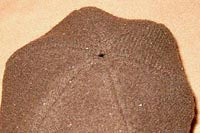
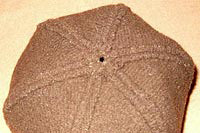
Step Three: Design and sew your embroidery and any other additions.
The embroidery patterns I used are from a Russian book on extant items, including textiles, household items, weapons and many other things. It is a simple pattern, which I recreated in gold wool and accented with white cultured pearls.
Step Four: Cut 6 fur pieces 10cm longer than your wool pattern and sew.
You may need to cut a new pattern to help you cut your fur. Instead of adding a 1cm allowance you only need approximately 2mm for the fur. When cutting fur you should keep the fur direction the same way for each panel. In order to get a nice fluffy edge you also need to look at the direction when the fur is folded. I cut mine so that the fur was pointing away from the pointed end of the pattern. To cut the fur without damaging the folicles use either a craft knife on the leather side or small embroidery scissors with sharp points that can get between the fur. If you cut through the fur folicles you may be unhappy with the finish.
Sew each panel together using a thread such as linen. If you are using recycled fur, such as an old fur coat, then be careful the threads do not tear the leather. You may have to re-enforce spots.
Step Five: Tack the wool to the fur to keep its basic shape.
Fixing the fur and the wool parts together is probably the hardest step, though not the most time consuming. I started by tacking the two domes together at the points, then adding another line of tacking about 5-10 cm from the point around the dome. I then tacked the bottom of the wool to the fur ready for turning the fur band evenly.
Step Six: Sew fur to wool around the top of the band.
Fold your fur around to the desired height on your wool. I found that I had enough to fold over and back under again giving me in practicality three layers of fur where the band is.
Sew the fur to the wool around the edge of the band, and then using your needle carefully lever out any fur that got sewn into the band so you have a nice even fluffy edge.
Additional Resources
Hat pattern base and Birka grave find image from Historiska världar
Example of pattern use by Þóra Sharptooth
Fur trimmed hats from Eastern Europe and Central Asia by The Renaissance Tailor
Easter 2005: This hat won second prize in the clothing category of an Arts & Sciences competition at the XIIIth ARC (Australian Re-enactors Conferention) despite me not having any of my documentation to submit with it

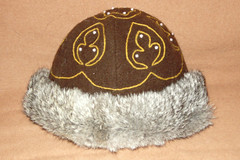
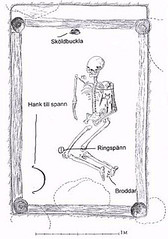

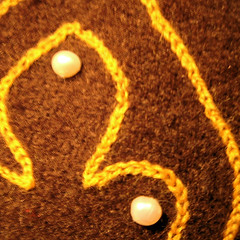
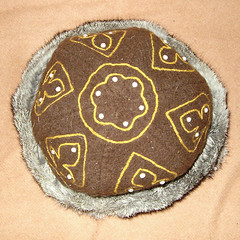

No comments:
Post a Comment